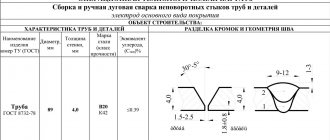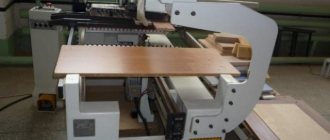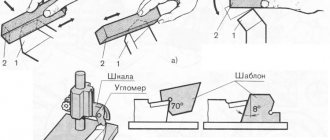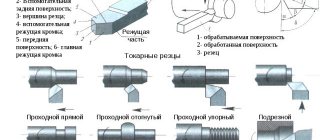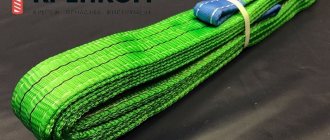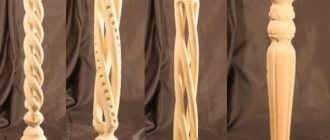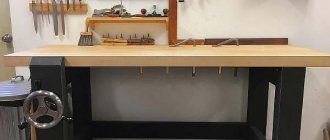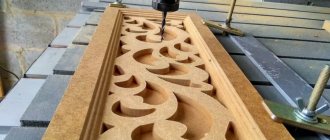Sample job description for a turner
General provisions
- The turner reports to the head of the workshop.
- A turner is hired, as well as dismissed, by the head of the company, on the recommendation of the head of the workshop.
- During the absence of a turner (business trip, illness, etc.), his functions are transferred to another specialist determined by the head of the workshop.
- An applicant for a turner position must meet the following qualification criteria:
- secondary or technical secondary specialized education;
- One year of experience as a turner.
- The turner must have competencies in the following areas:
- fire and technical safety standards;
- standards for working with technical documentation;
- rules for assessing achieved labor results;
- a system of parameters used to determine the roughness, accuracy and other criteria of machined parts;
- types of control and measuring equipment used when working with parts;
- technologies and equipment used in the field of its activities;
- features in the operation of lathes, their main brands and varieties;
- methods of manufacturing and straightening simple and complex parts;
- rules for detecting defects in parts;
- methods of using universal devices on machines;
- rules for determining the quality and degree of wear of the devices used;
- rules for preparing lathes for operation, their debugging and calibration;
- stages of checking the serviceability of lathes and tools;
- rules for working with sketches and drawings of parts;
- rules for working with cutters and drills;
- methods for achieving the required quality levels in terms of cleanliness and precision of processing;
- fundamentals of the theory of working with metals, within their competence;
- rules for using tools and equipment.
- The turner in his work focuses on:
- legislative and regulatory acts;
- industry standards
- employer documentation;
- information from this manual.
Functions
The turner performs the following operations:
- Carrying out the necessary turning work in accordance with specified criteria.
- Compliance with standards for the operation of machines, tools, and equipment.
- Inspection and preparation for operation of lathes.
- Interaction with other shop employees on issues related to turning operations.
- Monitoring the situation with stocks of necessary devices, parts, ingredients.
- Applying threads of the required level of complexity.
- Carrying out control measurements of the received parts using appropriate equipment.
- Processing and finishing of parts with increased complexity.
- Application of relevant technical documents.
- Maintaining established standards of order in your workplace.
- Compliance with labor protection rules, fire safety standards and labor discipline parameters.
- Maintaining the necessary document flow within its competence.
Responsibility
A turner can be held liable on the following grounds:
- For failure to perform job functions specified in the employment contract and these instructions - within the limits specified in labor legislation and company rules.
- For offenses committed in the workplace - in the manner specified in the sections of administrative, criminal, and labor law.
- For material damage received by the company due to its incompetent activities - within the limits specified in the sections of the relevant legislation.
Rights
The turner is endowed by the employer with the following rights:
- Make suggestions to improve aspects of your work procedures.
- Inform the workshop manager about problematic issues in work activities.
- Require from company employees the information necessary for the quality performance of assigned duties.
- Have access to the criteria by which the employer evaluates the performance of his activities.
- Receive from the employer translations of technical documentation necessary for the effective performance of job duties.
Working conditions
- A turner periodically improves his professional level by undergoing free additional training under the conditions specified in the company’s documentation.
- A turner undergoes a medical examination upon entering work, and also periodically repeats it in accordance with established rules.
- A turner is required to undergo training on labor protection and fire safety standards upon entering work.
- The company issues work clothes to the turner and provides tools in the manner specified in the internal documentation.
Medical contraindications
In order to perform their duties efficiently, a candidate for the profession of a turner must undergo a specialized medical examination
, after which the employee is issued a medical examination, which confirms professional suitability for this specialization.
There are a number of contraindications
that prevent you from starting your professional duties.
A turner cannot perform professional activities if:
- there are problems with the musculoskeletal system;
- impaired cardiovascular system;
- respiratory diseases are present;
- there are obvious skin diseases;
- the examination revealed diseases of the digestive system;
- absence or weak impulses of auditory and ophthalmic analyzers.
Features of creating a job description
When writing instructions, employers have greater freedom of action, since the requirements for its preparation are not enshrined in legislation. But to avoid risks, they prefer to use standard samples, modifying them to suit their needs. These samples are created on the basis of business document flow norms, the provisions of qualification reference books and professional standards. They have the following structure:
- Common parameters.
- Job responsibilities of a specialist.
- His rights at work.
- His responsibility.
Employers can add additional sections to these standard sections if they wish to highlight certain aspects more clearly. Here are the most common auxiliary parts:
- Criteria for evaluating the results obtained by the employee.
- Features of the work.
- The order of official relations.
Extended versions of the instructions are common in large companies with a significant number of employees who are involved in a variety of operations.
Attention! Since the instruction is actually an annex to the employment contract, it should not contradict it or go beyond the scope indicated in it.
General section
An introductory section containing a description of the general principles of the employee’s activities. It prescribes the procedure for his hiring and dismissal, to whom he reports, and other similar points.
A special role is played by the list of required knowledge and skills that should ensure the effective performance of job functions listed in the next part.
Attention! For a number of professions, including turner, suitable professional standards and sections of the Unified Tariff and Qualification Handbook (UTKS) can be used in the preparation of instructions. The professional standard for a turner 40.078 was approved by the Ministry of Labor on March 13, 2017, and its categories are listed in paragraphs 108-112b of the ETKS.
Functions
The contents of this section can be divided into three groups:
- Basic responsibilities are the same at different enterprises for specialists of the same profile.
- Secondary - may vary depending on the specific area of work and the specifics of the employer.
- Typical - those functions that are mandatory for different professions (comply with labor protection standards, safety rules, etc.).
Attention! If a company practices providing tools or workwear, then they separately include a paragraph in which they oblige the employee to take care of their use and storage.
Responsibility
The section identifies several common situations when a specialist can be held accountable for violations in the workplace. Since penalties, as well as procedures for determining the degree of responsibility, are contained in the relevant articles of legislation, the description in this section is given in a general format, with a minimum of specifics.
Rights
The list of labor rights described in this part is fairly standard for technical specialists. But it can be transformed and supplemented depending on industry specifics, the employee’s place in the hierarchy and other points. So, for a turner, if his work is related to foreign equipment, you can register the right to have technical documentation translated by the employer or travel abroad to the manufacturing company to improve his skills.
Features of work
An additional section included in the instructions if the employer wants to highlight some features of the work: non-standard schedule, opportunities for foreign business trips and other specific points.
After drawing up the instructions, they must be approved by specialists and company managers. Typically, a lawyer, HR manager, and deputy directors participate in the approval process. Only after taking into account their comments can the instructions be printed out - usually on letterhead, including the attributes of an official document - and given to the director for signature. The specialist himself gets acquainted with the instructions during the employment process and, by signing, agrees with its contents.
ETKS. TURNER (3rd category)
| ETKS | Unified Tariff and Qualification Directory of Works and Professions of Workers |
| Issue 2 | Mechanical processing of metals and other materials |
| § 109 | TURNER (2nd rank, 3rd rank, 4th rank, 5th rank, 6th rank, 7th rank, 8th rank) |
Characteristics of the work. Processing on universal lathes of parts of 8 - 11 qualifications and complex parts of 12 - 14 qualifications. Processing of parts according to 7 - 10 qualifications on specialized machines set up to process certain parts or perform individual operations. Turning of thin-walled parts with wall thickness up to 1 mm and length up to 200 mm. Performing turning operations using the method of combined plasma-mechanical processing under the guidance of a more highly qualified turner. Cutting external and internal single-start triangular, rectangular and trapezoidal threads with a cutter. Thread cutting with swirl heads. Control of turning-centering machines with center heights of 2000 mm and above, distance between centers of 10,000 mm and more. Control of turning-centering machines with center heights of up to 800 mm, having more than three supports, under the guidance of a more highly qualified turner. Performing the necessary calculations to obtain the specified conical surfaces. Control of lifting and transport equipment from the floor. Slinging and lashing of loads for lifting, moving, installation and storage. Turning of mica and micalex workpieces.
Must know: the structure, rules of adjustment and testing for accuracy of universal lathes; rules for controlling large-sized machines, serviced together with a turner of a higher qualification; device and rules for using universal and special devices; device and conditions of use of the plasma torch; purpose and rules for using control and measuring instruments and instruments; geometry and rules for sharpening cutting tools made of tool steels or with a plate made of hard alloys or ceramic; system of admissions and landings; qualities and roughness parameters; basic properties of processed materials.
Work examples
1. Brake shoes - turning after surfacing.
2. Smooth and tapered bolts - full turning H9 - H11 (3 - 4 accuracy class).
3. Bolts, forks, screws, couplings, turnbuckle ears, plugs, studs, gougons, fittings with a thread diameter over 24 to 100 mm - full turning with thread cutting.
4. Shafts, axles and other parts - turning with allowance for grinding.
5. Threaded welds - final processing.
6. Smooth and stepped rollers up to 1500 mm long - full turning.
7. Shafts with a length of more than 1500 mm (length to diameter ratio of more than 12) - peeling.
8. Shafts and axles with up to five finishing journals - full turning.
9. Crankshafts for presses, compressors and engines - preliminary turning of the journals, cutting the ends of the journals and turning the cone.
10. Shafts and axles up to 1000 mm long - deep hole drilling and full turning.
11. Caliper screws with a cutting length of up to 500 mm - full turning.
12. Bushings - turning of internal longitudinal and helical lubrication grooves.
13. Smooth and flanged bushings with a diameter and length of over 100 mm - full turning.
14. Adapter bushings with Morse taper - full turning.
15. Nuts up to M22, studs up to M20, flanges up to D100 mm - full turning.
16. Nuts and locknuts with thread diameter up to 100 mm - full turning.
17. High-precision nuts with a thread diameter of M24 and higher - turning for a tap - broaching.
18. Caliper nuts with a cutting length of up to 50 mm - trimming, drilling, boring and threading.
19. Parts such as bushings and rings made of non-metallic materials - turning.
20. Disks, washers with a diameter of over 200 mm - full turning.
21. Diffusers, adapters, conical tips, bottoms with a diameter of over 200 mm - full turning.
22. Bottoms - final turning with flats and chamfers.
23. Connector plugs - full turning.
24. Oxygen device valve blanks - grinding.
25. Countersinks and cutters with insert knives - full turning.
26. Connector plugs - full turning.
27. Calibers (plugs, rings) for trapezoidal and special threads - turning with allowance for grinding.
28. Elbows, quadruples, crosspieces with a diameter of up to 280 mm - full turning.
29. Wheels and bushings of electric clocks and time instruments - boring holes.
30. Rings with a diameter of over 200 mm - full turning.
31. Spacer rings with a diameter of 150 mm and above and a wall thickness of up to 8 mm - turning according to the 3rd accuracy class.
32. Spherical spacer rings - grinding according to a template, boring.
33. Lubricating, fitting and clamping rings - final processing.
34. Valve bodies - turning, boring with threaded threads.
35. Medium complexity valve bodies and covers - full turning.
36. High pressure valve block housings - pre-treatment.
37. Tank and reservoir bodies - turning for welding.
38. Cuff covers made of two halves - final processing.
39. Covers, rings with labyrinth grooves with a diameter of up to 500 mm - full turning.
40. Flywheels - full turning with radius turning of the rim.
41. Non-returners - full turning.
42. Wheelset axles of rolling stock - turning with allowance for grinding.
43. Drill chucks - full turning.
44. Branch pipes, tees - full turning.
45. Replaceable connector boards - full turning.
46. Die - turning with thread cutting with a tap.
47. Pistons - cutting the bottom, turning the outer surface, boring the chamber.
48. Wire springs - coiling.
49. Punching and piercing punches - turning for grinding.
50. Tool holders, gear racks, handles for gauges with conical holes - full turning.
51. Curly handles and handles - full turning.
52. Levers, brackets, earrings, rods and connecting rods - final turning.
53. Oil seals, stuffing box nuts, bulkheads with threads up to M100, valve plates - full turning.
54. Drills, taps, reamers, cylinder necks - turning.
55. Rods - turning with thread cutting.
56. Flanges, flywheels with a diameter of over 200 mm - full turning.
57. Mills: angular single-sided disk, slotted, slotted, fillet, shaped for wood, keyed, end Karaseva - turning with allowance for grinding.
58. Fittings, tees, nipples, angles with a diameter of over 50 mm - full turning.
59. Collets for clamping and feeding to machines - turning with allowance for grinding.
60. Turning centers - turning for grinding.
61. Washing washers and spacers - turning according to sketches.
62. Spur gears, cylindrical pulleys and for V-belt transmissions with a diameter of over 200 to 500 mm, bevel and worm gears with a diameter of up to 300 mm - full turning.
63. Rods for steam hammers - preliminary turning.
64. Contact pins and sockets for connectors - full turning.
65. Conical pins - final turning.
